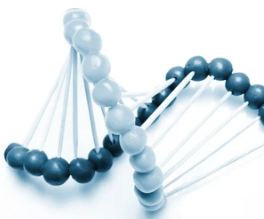Structure and Properties of PNA
Peptide nucleic acids (PNAs) are sophisticated oligonucleotide analogs that feature nucleobases, a peptide backbone, as well as an N-terminus and a C-terminus. The nucleobases embedded in PNAs are the classic adenine (A), guanine (G), cytosine (C), and thymine (T), all of which can also be found in DNA. However, the nucleobases in PNAs are not attached to the conventional deoxyribose or ribose sugar. Instead, they are coupled to an N-(2-aminoethyl) glycine monomer, which then goes on to create a peptide bond with the neighboring monomer. This unique chemical makeup of PNAs imbues them with an exceptional characteristic, i.e., the peptide backbone is neutral and uncharged. This is unlike the negatively charged sugar-phosphate backbone that characterizes DNA and RNA. Consequently, PNAs exhibit a remarkable level of stability and solubility in aqueous solutions, and they possess remarkable resistance to the deleterious effects of enzymes such as nucleases and proteases, which can otherwise degrade natural nucleic acids.
Advantage of Nucleobase-Modified PNA
The dearth of chemical diversity inherent in standard PNA nucleobases presents a significant hindrance to their effective deployment across diverse domains. It is for this reason that researchers have delved into the exploration of various modifications of PNA nucleobases that could enhance their properties and increase their chemical space. This can be done either by replacing the native nucleobases with modified analogs or by incorporating functional groups onto the natural nucleobases or the peptide backbone. The inclusion of modified PNA nucleobases can greatly enhance the binding affinity, specificity, or stability of PNA-DNA or PNA-RNA duplexes. Moreover, this modification can also endow PNA molecules with novel chemical or biological functions that were previously unattainable.
(1) N-methylated nucleobases: N-methylated adenine and guanine are modified analogs of the natural purine nucleobases. N-methylation of the amino group in the purine ring increases the hydrophobicity and steric bulk of the nucleobase and improves the stacking interaction between PNA and DNA or RNA duplexes. N-methylated adenine and guanine can form stable duplexes with complementary DNA or RNA sequences and exhibit higher binding affinity and specificity than their unmodified counterparts. However, the introduction of N-methyl groups can also decrease the solubility and increase the rigidity of PNA molecules, which may affect their cellular uptake and bioactivity.
(2) 5-methylcytosine: 5-methylcytosine is a modified analog of the natural pyrimidine nucleobase cytosine. 5-methylcytosine can form stable base pairs with guanine and can enhance the stability and specificity of PNA-DNA duplexes. In addition, 5-methylcytosine is an epigenetic mark that regulates gene expression and can affect the recognition and binding of transcription factors and other proteins to DNA. Therefore, PNA molecules containing 5-methylcytosine can be used as tools for epigenetic editing and regulation.
(3) 2-aminopyridine: 2-aminopyridine is a modified analog of the natural pyrimidine nucleobase uracil. 2-aminopyridine can form stable base pairs with adenine and can improve the specificity and selectivity of PNA-RNA duplexes. In addition, 2-aminopyridine can be used as a fluorescent probe to monitor the hybridization and melting of PNA-DNA or PNA-RNA duplexes.
(4) Thymidine analog: Thymidine analog is a modified analog of the natural pyrimidine nucleobase thymine. Thymidine analog can form stable base pairs with adenine and can enhance the stability and specificity of PNA-DNA duplexes. In addition, thymidine analog can be functionalized with various functional groups, such as fluorophores, biotin, or peptides, to confer new chemical or biological functions to PNA molecules.
(5) N6-benzoyl adenine: This modification provides an additional contact point with the complementary DNA target and has been shown to improve the specificity of PNA for specific sequences. BzA modification can also enhance the stability of the PNA-DNA complex by reducing electrostatic repulsion between the two molecules.
(6) 2-thiouracil: This modification can enhance the stability of the PNA-DNA/RNA duplex by forming an additional hydrogen bond with the complementary nucleobase, thus providing a more stable structure.
Reference
1. Perera JDR, Carufe KEW, Glazer PM. Peptide nucleic acids and their role in gene regulation and editing. Biopolymers. 2021 Dec;112(12): e23460. doi: 10.1002/bip.23460. Epub 2021 Jun 15. PMID: 34129732.





Comments